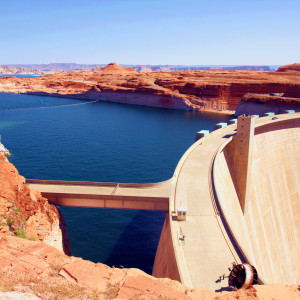At least since the 1973 Oil Embargo there have been calls for a national energy policy. Most proponents of such a policy envision guidelines for the future mix of energy sources, targets for energy conservation, standards for balancing energy production against competing social needs, and recognition of foreign policy considerations.
A 2004 Congressional Research Service report to Congress concluded that over the three decades since the embargo, Congress had periodically responded to instabilities in energy markets but had failed to develop a coherent national energy policy. Now, another decade later, Congress and the President are still urged to come up with of a national energy policy.
What would such a policy look like? Would it tell us whether nuclear generation should be encouraged, limited or banned? Would it resolve the endlessly contentious issues relating to hydro generation and endangered species protection, fracking and ground water pollution, automobile mileage and passenger safety, public transportation and highway construction, wind turbines and bird deaths? And what about the Keystone pipeline? Would a national energy policy help our president to resolve this seemingly intractable question?
It’s hard to imagine a policy that would provide meaningful guidance for any of these or a multitude of other energy-related questions. And if we had such a policy, it would almost certainly be a disaster for our energy future.
A national energy policy capable of resolving these issues would have to resemble a Soviet era five-year plan. As recent experience makes clear, even five years is an eternity when it comes to energy planning. A national energy policy enacted five years ago could not have anticipated the abundance of natural gas now produced by fracking technology. Five years ago politicians were battling over proposed liquefied natural gas export terminals. Now they are battling over proposed import terminals.
The reality is that we can never know enough to decide today how energy could be most efficiently produced and consumed, with a minimum of harmful side effects, five years from now, let alone ten or twenty years in the future. Which is not to say that Congress could not dictate future energy mixes, production technologies and consumer options. Congress could, and it would almost certainly result in production and consumption inefficiencies and the stifling of technological innovations.
Fortunately, as the past four decades make clear, there is very little chance that Congress will enact anything resembling the sort of national energy policy imagined by most proponents. Even if Congress overcomes its present paralysis and actually enacts legislation we can expect it to be more of the same – responses to short-term crises and market instabilities along with a host of pork for the folks back home.
Of course, the Mets did win the World Series in 1969 and the Berlin Wall did come down two decades later, so anything can happen. In that unlikely event, the energy policy Congress should pursue is one that mandates little and encourages much. Planners and rent seekers should be spurned in favor of eliminating subsidies, reducing innovation-squelching regulations, and using taxpayer dollars only in support of truly basic research.
The fortuitous absence of a national energy policy, in the sense of a national energy plan, has allowed the dramatic changes we have witnessed over the past few years. If we can manage to keep the planners and special interest lobbyists at bay, we can expect more of the same in the future. That’s probably as good a national energy policy as we should hope for.

